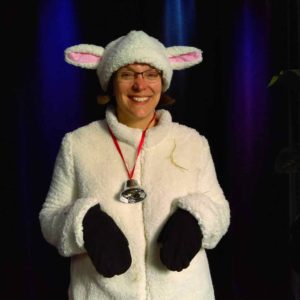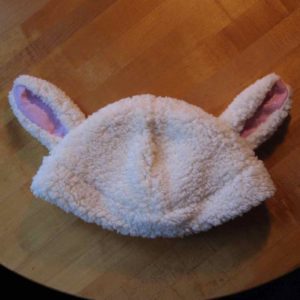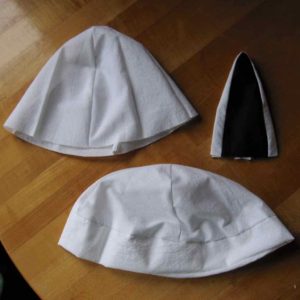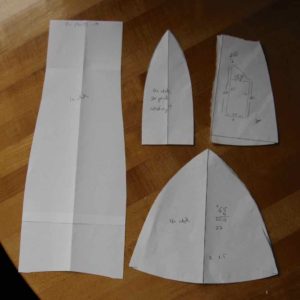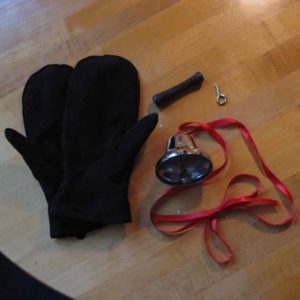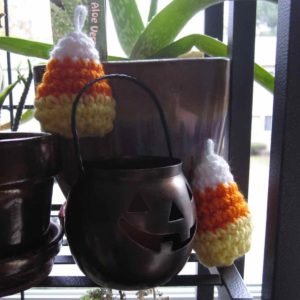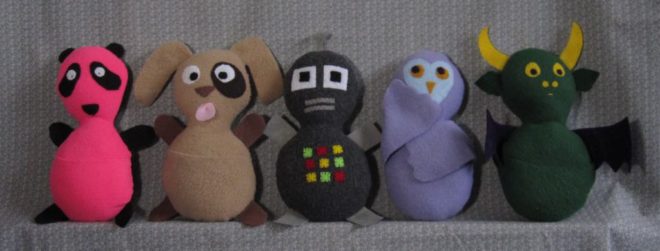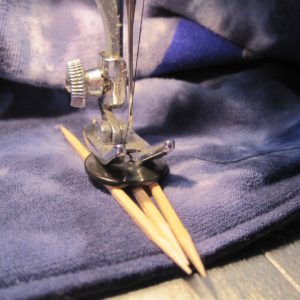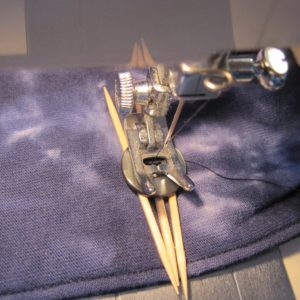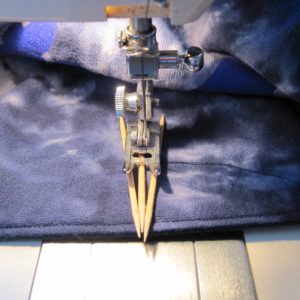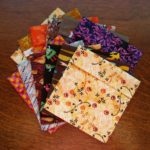I made a Halloween costume this year for the first time in a while. About a week and a half ago I was driving to pick up our farmshare, and I thought, “I should be a sheep for Halloween.”
The original plan was a shearling coat, a hat with lamb ears, mittens, and face paint for my nose. I was lucky enough to find a remnant of faux shearling that matched the lining of an on-sale coat – though not so lucky that the coat had lined sleeves. I had to create and attach sleeves, which was simple but somewhat time-consuming: cut sleeve-shaped pieces and make them into tubes, then pin and sew by hand to the coat (by hand partially because it seemed easier and less visible, and partially because once I’m through with this costume I’ll take them back off and wear the coat for real!). Not my tidiest sewing job, but… it’s a Halloween costume.
For the hat, I took the general game plan from a dinosaur hat tutorial by Stitched by Crystal and a reversible fleece hat video tutorial by The Crafty Gemini: four rounded triangles and a band below. I decided to make a folded band instead of two pieces since my material was already thicker than theirs, and created ears to insert as low in the side seams as possible. The final hat is bigger around than necessary and a bit shallow for a real winter hat, but if I want to make myself a real hat it will be a good starting point.
I made an incomplete muslin and a complete muslin, plus one muslin ear. In my pattern piece photo below, the ear isn’t quite the final version – I rounded out the middle, so it not only tapered toward the point, but a bit toward the base as well.
The mittens were a lucky find that I expect to get a lot of use out of. The bell was a late addition when I worried (based on my hat muslin) that people might think I was a bunny. The bell was originally a Christmas bell with a handle, which unscrewed easily. The internet agreed that lambs wear their bells on red ribbons, so that’s what I used. It rang lightly with every step I took and really added to the costume. Though I had to move it out of the way when hugging people lest someone end up with a bruised sternum.
The lack of nose paint was a completely last minute change – I had applied it, and wiped it off with a napkin in the car on the way to the party because it just didn’t look right. Perhaps it just accentuated that my face was otherwise completely human?
In the photo at top, the straw caught in my fleece (so authentic!) was from a hayride I took at the party. (Though I may have patted some onto spots where it didn’t get naturally…)
One bonus shot: Earlier this month I made a couple of candy corns out of Petals to Picots’ crochet candy corn pattern. Easy and good! For the hanging loop, I folded a separate length of yarn in half, tied a bulky knot, and slid it into the magic ring before tightening. The knot keeps it from coming out, and if I decide I don’t want it I can push it inside or cut it off.
